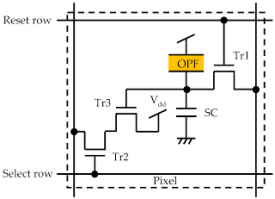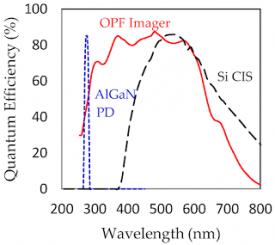MDPI Special Issue on the 2017 International Image Sensor Workshop publishes Panasonic paper “A Real-Time Ultraviolet Radiation Imaging System Using an Organic Photoconductive Image Sensor” by Toru Okino, Seiji Yamahira, Shota Yamada, Yutaka Hirose, Akihiro Odagawa, Yoshihisa Kato, and Tsuyoshi Tanaka.
“We have developed a real time ultraviolet (UV) imaging system that can visualize both invisible UV light and a visible (VIS) background scene in an outdoor environment. As a UV/VIS image sensor, an organic photoconductive film (OPF) imager is employed. The OPF has an intrinsically higher sensitivity in the UV wavelength region than those of conventional consumer Complementary Metal Oxide Semiconductor (CMOS) image sensors (CIS) or Charge Coupled Devices (CCD). As particular examples, imaging of hydrogen flame and of corona discharge is demonstrated. UV images overlapped on background scenes are simply made by on-board background subtraction. The system is capable of imaging weaker UV signals by four orders of magnitude than that of VIS background. It is applicable not only to future hydrogen supply stations but also to other UV/VIS monitor systems requiring UV sensitivity under strong visible radiation environment such as power supply substations.”

